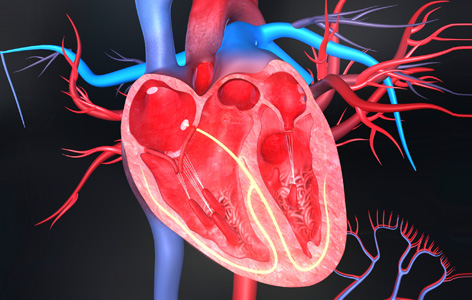
The heart maintains normal blood circulation by pumping blood into the arteries. Increased resistance against the flow of blood, which occurs in individuals with high blood pressure, requires the heart to pump harder to keep the blood circulating. To compensate for the increased work, heart cells must increase their size through a process known as hypertrophy. This compensatory mechanism can maintain heart function for a short period of time; however, if high blood pressure persists, the enlarged heart cells outgrow their blood supply. Without the required increase in blood vessel growth, the heart cells die causing irreversible damage to the heart that eventually leads to heart failure.
Increasing the number of blood vessels in the hypertrophic heart has been shown to halt the progression to heart failure by providing vital oxygen to injured heart tissue. With this in mind, TGHRI Scientist Dr. Ren-Ke Li examined the role of a new protein known as Canopy2, which was recently identified as a blood vessel growth factor. Dr. Li and his team discovered that boosting levels of Canopy2 in the heart could stimulate blood vessel growth, preserve heart function and prevent the structural changes leading to heart failure.
Explains Dr. Li, "We think that Canopy2 decreases the activity of a protein called p53, which is known to inhibit blood vessel growth. This may explain why Canopy2 is able to prevent the cell death that normally occurs in response to severe stress. It also suggests that Canopy2 could potentially contribute to preventing heart failure."
This work was supported by the Canadian Institutes of Health Research, the Toronto General & Western Hospital Foundation and the McEwen Centre for Regenerative Medicine. R-K Li holds a Tier I Canada Research Chair in Cardiac Regeneration.
Canopy 2 attenuates the transition from compensatory hypertrophy to dilated heart failure in hypertrophic cardiomyopathy. Guo J, Mihic A, Wu J, Zhang Y, Singh K, Dhingra S, Weisel RD, Li RK. European Heart Journal. 2015 July 9. [Pubmed abstract]




